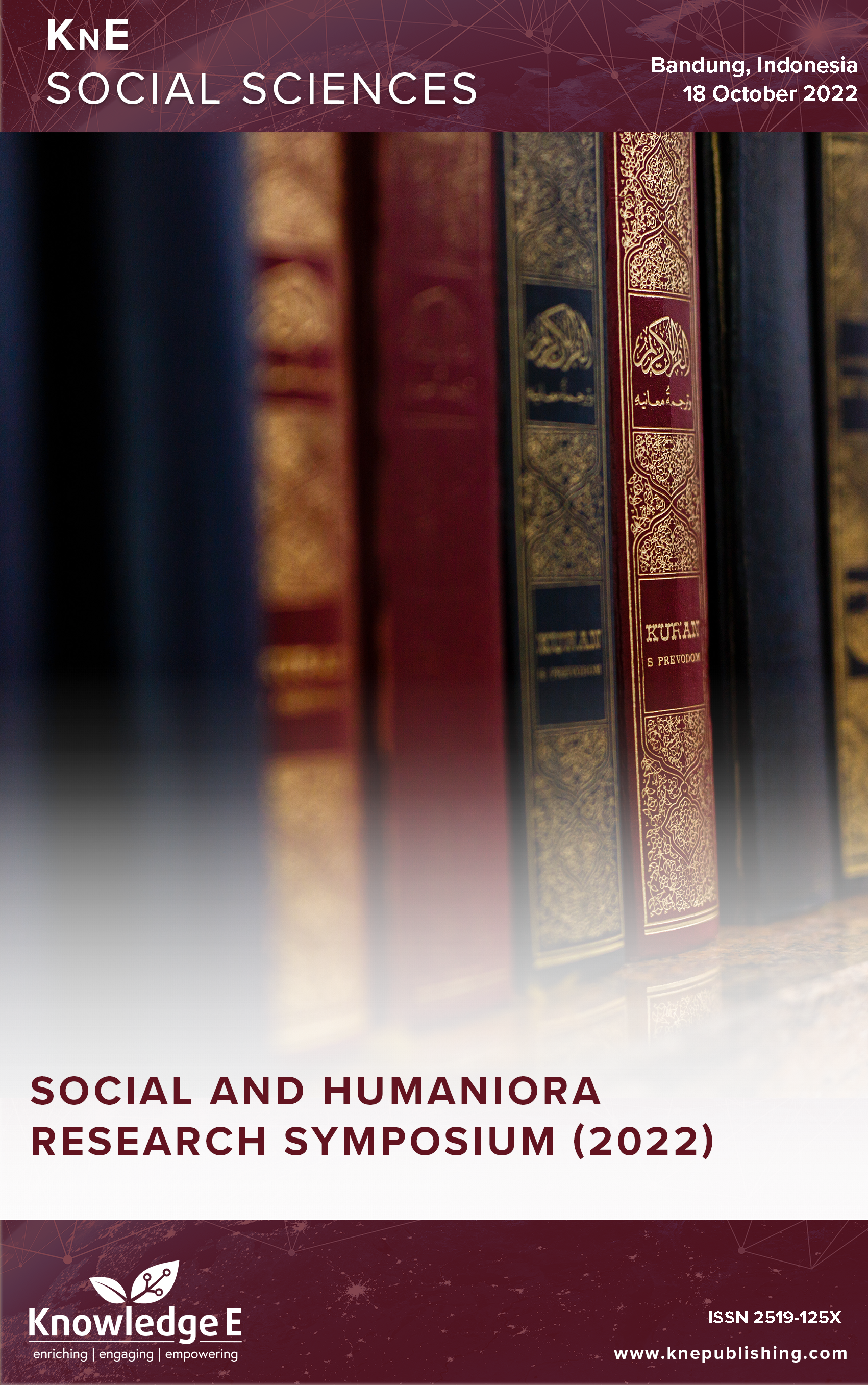Students' Instagram Social Media Behavior A Study at Aisyiyah Boarding School, Indonesia
DOI:
https://doi.org/10.18502/kss.v8i18.14349Abstract
There has been studies on social media use in Asia, especially in Indonesia. However, not many of them exclusively emphasize on one particular homogeneous community based on religion aspect. This paper aims to describe the use of Instagram among muslimah students in an Islamic Boarding School in West Java, Indonesia. Specifically, this study portrays how muslimah students use and behave during their time using Instagram. This paper also tries to display their understanding on the emergence of safety and security setting function. The data were taken from online questionnaires shared to muslimah students at Aisyiyah Boarding School. The questions are open and closed questions. The research method used is a descriptive quantitative method. The results show that their social media behaviors are positively formed in an environment that supports well-scheduled activities. They only use Instagram occasionally, especially when the teachers ask them to submit tasks there. They rarely post personal contents that have no correlation with school assignments. Most of them use the “block comments and users” setting to keep their account private and safe. They claimed themselves as a non-Instagram addicts as they never experience the same fun feeling when they socialize face-to-face with their friends.
Keywords: social media study, Muslimah students, Instagram users behavior
References
[2] Mulawarman M, Nurfitri AD. Perilaku Pengguna Media Sosial beserta Implikasinya Ditinjau dari Perspektif Psikologi Sosial Terapan. Bul. Psikol. 2017;25(1):36–44.
[3] Zarella D. The social media marketing book. O’Reilly Media; 2009.
[4] Turow J. Media today mass communication in a converging world. 8th ed. New York: Routledge: Routledge; 2023.
[5] Anttiroiko R, A-V, Savolainen. “Towards library 2.0: The adoption of Web 2.0 technologies in public libraries. Libri. 2011;61(2). [Online]. Available: https://doi.org/10.1515/libr.2011.008
[6] NORC at the University of Chicago. New survey: Snapchat and Instagram are most popular social media platforms among American teens. Assoc Press Cent Public Aff Res. 2017. pp. 23–24.
[7] Enterprise J. Instagram untuk Fotografi Digital dan Bisnis Kreatif (Indonesian Edition). Elex Media Komputindo (September 11, 2014), 2014.
[8] Meinawati R. Peranan Motivasi Berprestasi Terhadap Prestasi Kerja Pada Agen Yang Bekerja di Kantor Operasional Pondok Gede dan Kalimalang AJB Bumiputera 1912 Cabang Jakarta Timur. J Psikol. 2007;5(1):1.
[9] Veletsianos G, Navarrete CC. 1078-Article Text-9250-2-10-20120709. Int Rev Res Open Distance Learn. 2012;13(1):145–166.
[10] Santrock JW, Adelar SB. Adolescence = perkembangan remaja, 6th ed. Jakarta: Erlangga.
[11] Madhow U. Fundamentals of digital communication. Volume 9780521874. 2008. https://doi.org/10.1017/CBO9780511807046.
[12] El Qudsi MI, Syamtar IA. “Instagram Dan Komunikasi Politik Generasi Z Dalam Pemilihan Presiden 2019 (Studi Pada Mahasiswa Universitas Pertamina),” Perspekt. Komun. J. Ilmu Komun. Polit. dan Komun. Bisnis. 2020;4(2):167.
[13] Yulianti Y, Putri DW, Hamdan SR, Sari Y. “Media usage behavior during Covid-19 pandemic.” Diakom J Media dan Komun. 2020;3(2):117–126. https://doi.org/10.17933/diakom.v3i2.116
[14] Ewen RB. An introduction to theories of personality. 7th ed. Psychology Press; 2014. https://doi.org/10.4324/9781315793177
[15] Vom Brocke J, Richter D, Riemer K. “Motives for using social network sites (SNSs) - An analysis of SNS adoption among students.” 22nd Bled eConference eEnablement Facil. an Open, Eff. Represent. eSociety - Proc., pp. 33–49, 2009.
[16] Sheldon P. Student favorite: Facebook and motives for its use student favorite: Facebook and Motives for its Use. Southwest Mass Commun J. ;23(2):39–53.

